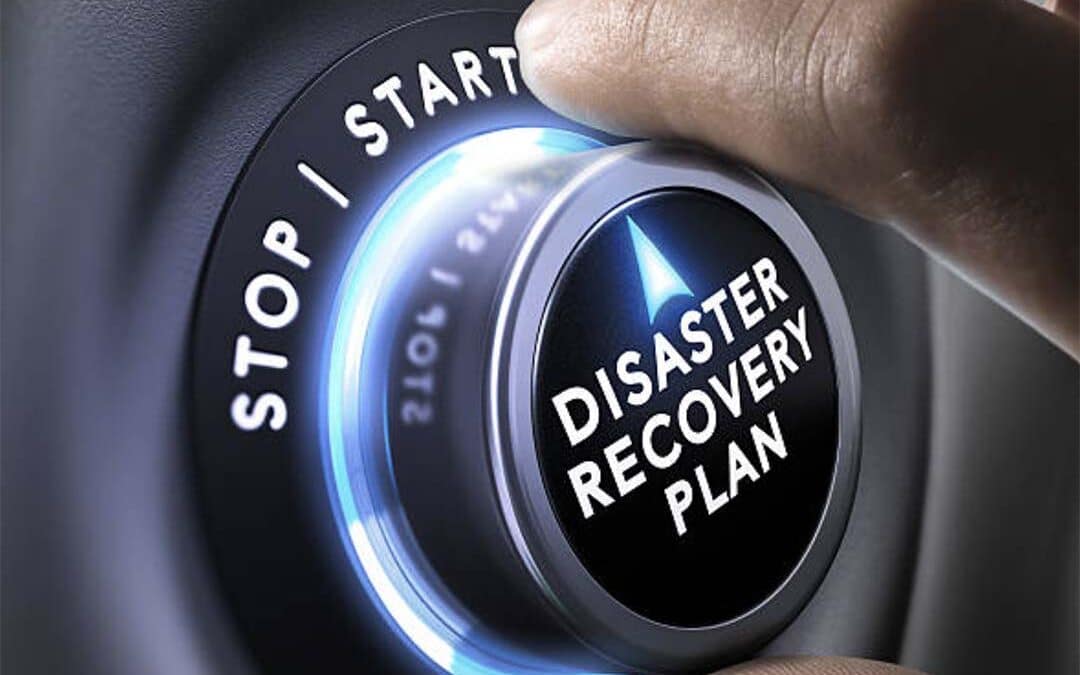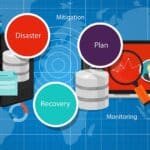Even as digital technology advances at breakneck speed, disasters are still inevitable. Usually, it’s not a question of if but when. From natural disasters to data breaches to cyberattacks, several potential threats can disrupt an organization’s network and cause data to be unavailable for a period of time. In some cases, it takes a very long time! As networks come back online, some sensitive data may be irretrievable. Creating a disaster recovery (DR) plan is the best way to mitigate these risks. While a business continuity plan (BCP) is designed to preserve the overall function of an organization, like relocating employees to an alternate workspace for safety, a disaster recovery plan is an organized set of procedures that enable enterprises to restore IT systems, retrieve data, and get the digital elements of their business up and running quickly. As a subset of a BCP, a DR plan focuses on the possible risks to an organization’s IT infrastructure and helps it prepare solutions for various disaster scenarios. However, creating a DR plan isn’t enough; it must be tested to ensure the procedures meet expectations when needed—that includes rigorous testing of backup systems.
What is Disaster Recovery Testing?
Disaster recovery testing is the process of verifying the procedures of a DR plan to ensure that network elements, applications, and data can be successfully restored in the event of a disruption. An organization will know what to expect when restoring critical services and business operations after an event by testing a DR plan. DR testing simulates various disaster scenarios, such as an IT failure or the loss of data, to determine if proper procedures are in place to address those threats. For any business, time is money. Whether a disruption is minimal or ongoing, it can significantly impact the overall functionality of an enterprise.
The longer an organization is disrupted, the greater the impact. Notable ramifications include incident-related expenses, lost revenue, and a sullied reputation in the marketplace. For these reasons and more, a DR test focuses on assessing an organization’s ability to meet recovery time objectives (RTOs) as well as recovery point objectives (RPOs) established in the plan. Including RTOs and RPOs for each element covered in the DR plan is important. A DR test can add valuable insights into how a network will respond if one of its components fails. Discovering weaknesses allows an enterprise to adjust accordingly. Along with the digital elements of disaster recovery testing, personnel who play a role in the recovery process must be properly trained and clearly understand their responsibilities in the event of an IT disruption.
How Often Should Disaster Recovery Testing Be Done?
Disaster recovery testing should be done at least once a year. As you go through your disaster recovery plan, you’ll need to evaluate each step and decide if there needs to be an adjustment, such as reorganizing the steps or eliminating some. Enterprises’ needs are constantly shifting, which means elements of a disaster recovery plan must also change. After all, change is inevitable. For instance, software and hardware can become obsolete, on-premises networks may migrate to the cloud, new employees may join the organization, and more. Even so, continual simulation of disaster scenarios with backup systems is important to ensure the network and data can be restored quickly.
Why Disaster Recovery Testing is Important and Should Be Done More Frequently Than Once a Year
The frequency of DR testing varies from enterprise to enterprise. Some do it quarterly, annually, or not at all! While annually may seem adequate and quarterly above and beyond, neither is good enough. The frequency of your DR testing depends on the answer to this very important question: How many hours/days/weeks/months can you afford to lose when your network and data become disrupted? ZERO. When IT failure strikes, a disaster recovery plan that is tested daily has the ability to minimize downtime and retrieve data so that organizations can keep functioning. With the ever-present threat of cyber crime, only a functional current backup that is hardened against hacking is the only way to achieve 100% recovery from ransomware. Whatever threat your IT system faces, Cynergy Technology has a disaster recovery soluiton.
In one instance, a Cynergy Technology client experienced a fire in their administration facility that destroyed their office, including their computer and telephone areas. The on-call Cynergy engineer had began working to get the system online and operational before the Fire Department had even finished extinquising the fire! Utilizing a temporary office, the client had access to critical systems via backup solutions from the cloud. Cynergy was also able to provide loaner equipment to the temporary office. Without a viable backup solution, the client would not have been able to meet their payroll processing deadline, which was only two days after the fire.
Testing your disaster plan minimizes the risk of losing access to the network and applications as well as to sensitive data. If an untested disaster recovery plan is implemented during a crisis and unable to meet expectations, the effects can be severe. Data may be irretrievable and lost forever, systems may remain offline indefinitely, and an excessive amount of resources may be required to restore some semblance of functionality. The only way to know if a disaster recovery plan will work is by testing it. Here are a few key advantages to testing a disaster recovery plan:
- Identifies weaknesses in the plan that otherwise would have remained undetected
- Helps organizations prioritize steps and sequences efficiently
- Provides realistic objectives and time frames to help manage expectations
- Minimizes the loss of data
- Gets all personnel on the same page and ensure responsibilities and duties are clear
- Saves time and money in the event of a disaster
- Minimizes reduction of revenue
- Minimizes the negative impact on an organization’s reputation among stakeholders, such as investors, employees, vendors, customers, and regulators.
How to Do Disaster Recovery Testing
Testing a disaster recovery plan starts with a full review of the current plan. Whether it’s the first test or a routine test, the disaster recovery team and senior management should evaluate any changes that have taken place since the plan was created. For instance, has there been a change in critical software or hardware? Has there been a shift in personnel or responsibilities within departments? In which direction, if any, has the organization scaled business? Are there any significant budgetary changes?
Next, testing objectives and parameters should be clarified:
- Identify which systems, applications, or functions you wish to include in the test.
- Decide what disaster recovery process will be tested, such as data backup retrieval, failover to a secondary site, or restoring VMs from backup.
- Determine which scenarios to test, such as a ransomware attack, a database failure, or a primary site failure.
Disaster recovery testing goes beyond ensuring a disaster recovery plan is airtight. The key to a good disaster recovery plan is regular testing. IT systems are very dynamic. The test you conducted yesterday does not guarantee security today. As systems evolve, organizations need to keep pace.
Cynergy Technology is a leading full-service technology provider specializing in cloud computing solutions, including disaster recovery testing. While most organizations may commit to testing their disaster recovery plans only once a year, Cynergy Technology fires up and tests the backup daily. Relying on an annual testing schedule may not be sufficient in safeguarding data. In some cases, there may be the potential to lose a large amount of sensitive data. With over forty-two years of experience, our team of professionals can assist your organization in creating a tailor-made disaster recovery plan. We can conduct regular and thorough DR testing and provide backup and disaster recovery solutions that support your enterprise’s needs. Contact our team of experts today for a free consultation!







